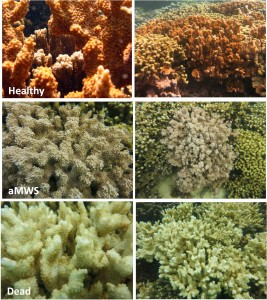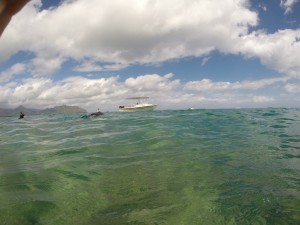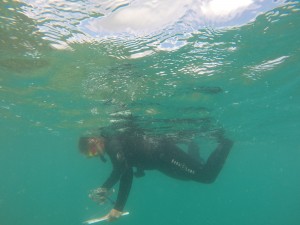Kaneohe Bay acute Montipora White Syndrome (aMWS)
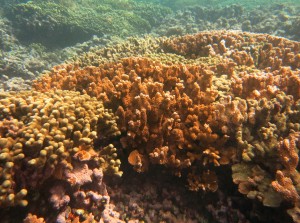 |
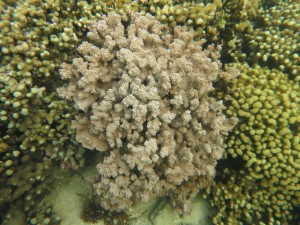 |
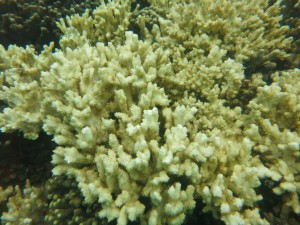 |
LATEST UPDATE: 2/12/2015
WATCH VIDEO FROM THE FIELD:
Full Press Release: https://dlnr.hawaii.gov/blog/2015/02/12/nr15-023/
aMWS is a disease which causes tissue loss in coral, and can kill coral colonies very quickly. It is affecting one species of Montipora, or rice corals, called Montipora capitata. It is unknown what in the environment drives this disease, researchers at HIMB are investigating a number of causes.
This disease was previously seen in Kaneohe Bay during outbreaks in 2010 and 2012.
A Rapid Response assessment team from the DLNR-DAR, along with HIMB and USGS researchers, is currently documenting the extent and severity of this disease.
The disease is currently affecting up to 90% of Montipora capitata colonies on certain areas of Kaneohe Bay, mostly the central portion of the bay. This value varies greatly and on some patches of reefs less than 5% of Montipora capitata colonies have the disease.
- USGS researchers will be examining tissues microscopically to see if infectious agents are associated with disease.
- HIMB is continuing to check affected patch reefs, as well as continuing experiments on disease pathology and possible environmental drivers of aMWS.
- The DAR Rapid Response assessment teams will be back in the water conducting a second round of photographic surveys to further quantify the how much coral has been killed by the disease.
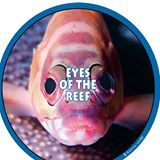 If you see large reef areas with this disease please make an online report through Eyes of the Reef (EOR): www.eorhawaii.org/make-a-report. Please send photos to: [email protected].
If you see large reef areas with this disease please make an online report through Eyes of the Reef (EOR): www.eorhawaii.org/make-a-report. Please send photos to: [email protected].
